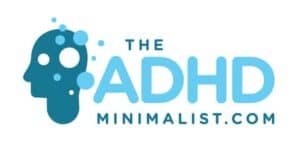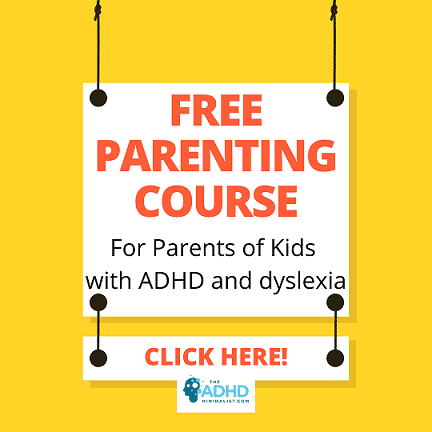
My kids and I have had plenty of struggles with making eye contact.
My oldest two children are diagnosed with ADHD by professionals in Sweden. I am originally from the USA, but I moved to Sweden 17 years ago when I married a Swede. The process for diagnosing ADHD seems to be more thorough in Sweden when compared to the process in the USA.
My Son was diagnosed with ADHD predominately Hyper seven years ago, and my daughter with ADHD inattentive shortly after.
Our third child, our youngest, is seven, and we told her teachers to keep an eye out for ADHD and dyslexia, but she’s lucky so far.
ADHD Predominately Hyper and Eye Contact in Children age four to six.
When my oldest, Lage (15), was in daycare (In Sweden, you start school at age six), the staff had trouble making contact with him, and eye contact wasn’t the only problem. They had trouble getting his attention in general.
The noise levels at most daycares are high. Even though my kids’ daycare had a much better child-to-adult ratio than most daycares today, he still couldn’t handle the general noise and extra stimulation that is indicative of corraling many young children in the same place.
On many occasions, the staff found him hiding under furniture, driving a toy car back and forth, back and forth, back and forth, one ear on the floor and a hand covering the other, hiding from the general chaos. The staff had a hard time finding him, making eye contact, and getting him to respond.
He had two responses to overstimulation, hiding was one, and the other was destroying friends’ creations. He regularly walked through lego builds and toppled toy train cities. The staff didn’t think he purposely did it, but he blocked everything out in his defense against overstimulation and put himself in a bubble.
The bubble of invisible padding insulated him from the chaos, and he didn’t pay much attention to what was going on around him outside his bubble. He flailed his arms or walked right through his friend’s projects without noticing what he knocked down.
When this happened, the staff took him aside and tried to look him in the eye to explain what had just happened. They were just as concerned for Lage and that he learned friendship is a two-way street as for the kids whose project was destroyed. Being the kid who always caused problems isn’t a great way to make friends.
As hard as they tried, they couldn’t always make eye contact with Lage, and the staff wasn’t always sure he understood what they explained. After a couple of years of such behavior, they voiced concerns that Lage had ADHD. We started the screening process when he was five.
I made Lage look me in the eyes at home. I looked him in the eyes and told him that I loved him and was proud of him. He found it difficult to look me in the eyes, but I wanted him to know that not all eye contact was negative.
ADHD Predominately Hyper and Eye Contact in Children age six to eight.
Lage started school, and he continued to have trouble making eye contact.
He liked wearing hats with bills because he felt safe in his little bubble when he couldn’t see others. The problem was he didn’t see or respond to the school staff. They couldn’t get his attention or make eye contact, and they eventually called my husband and me because Lage wasn’t allowed to wear caps to school anymore.
Not having a hat in the way helped some, but the staff still had to say his name several times, get down on his level, and try to look Lage in the eye to get his attention.

ADHD Inattentive and Eye Contact in Children ages four to six.
My Daughter, Maria, didn’t always make eye contact when she was small, but I believe it was for different reasons than Lage.
She has ADHD inattentive or what used to be called ADD. She played well by herself and constantly climbed furniture, stair railings, or trees. Her problem was communication. She was a late talker, and when she did start talking, she was quickly frustrated over her insufficient vocabulary.
She was slow to remember new words, and when she didn’t remember what she wanted to say, she often closed her eyes, threw back her head, and screeched!
At the dinner table, she would try saying, ”I want that,” while pointing, but the problem was she generally pointed to stuff on the table, and we didn’t know what she wanted.
We made a habit of lifting items one at a time, asking, ”Is this what you want?” but after the third item, she was fed up and screeching!
We had to begin teaching her that in order to communicate, she needed to make eye contact and point to specific items. It was a hard lesson to learn.
ADHD Inattentive and Eye Contact in Children ages six to eight.
As she got older, communication continued to be a problem.
We repeatedly reminded her that if she wanted us to listen to her, she needed to look us in the eye and make sure she had our attention first.
During this time, we found out she not only had ADHD inattentive but also dyslexia which made communication hard for her.
She repeatedly tried to talk to me with her back turned to me, or if we were standing together in the kitchen when she started talking, she would look away from me.
Looking away from the person you’re talking to means your voice is projecting away from the person you’re trying to communicate with. The result was I said, ”What?” much of the time, and that frustrated Maria to no end!
Again we had to revisit that communication is not just about words. It’s about eye contact, body language, voice inflections, and words. If you look away and turn your body away from those you’re trying to communicate with, your communication is cut off and won’t be apparent to the other person.

What to do about ADHD kids who don’t make eye contact
My kids continued to struggle with eye contact over the years.
As I said, I made Lage and Maria look me in the eyes at home. I looked them in the eyes and told them that I loved them and was proud of them. My kids found it difficult to look me in the eyes, but I wanted them to know not all eye contact is negative.
In the end, Lage learned to make eye contact because my husband and I tuned him out. Our defense mechanisms kicked in as we tried to keep it together while he was falling apart.
When Lage turned eleven, he had a tough couple of years. He stressed out every day after school when his ADHD medicine wore off. He had panic attacks, and during these episodes, he talked incessantly, paced back and forth, wanted our undivided attention, and tried to hinder us from helping the girls.
He talked so much that we tuned him out.
In the end, he learned from us tuning him out. When he had something important to say, he needed to…
- Put his hands on our shoulders.
- Look us in the eye.
- Say what he wanted while looking us in the eye to make sure we understood.
He is now 15, and he still remembers that looking us in the eye is a sure way to make sure we’re listening.
If he feels we aren’t hearing him while we make dinner etc. He says, ”Mom, stop and look at me! I want to know you hear me!”
Maria still struggles with communication, but our reiteration of the importance of turning towards the person you are talking to and making eye contact helps her remember communication skills.
Practicing making eye contact at home in a safe environment is vital if you want your kids to be able to make eye contact with those outside your home.
Check out my other posts on ADHD and eye contact here.
Copyright Annie Eklöv

